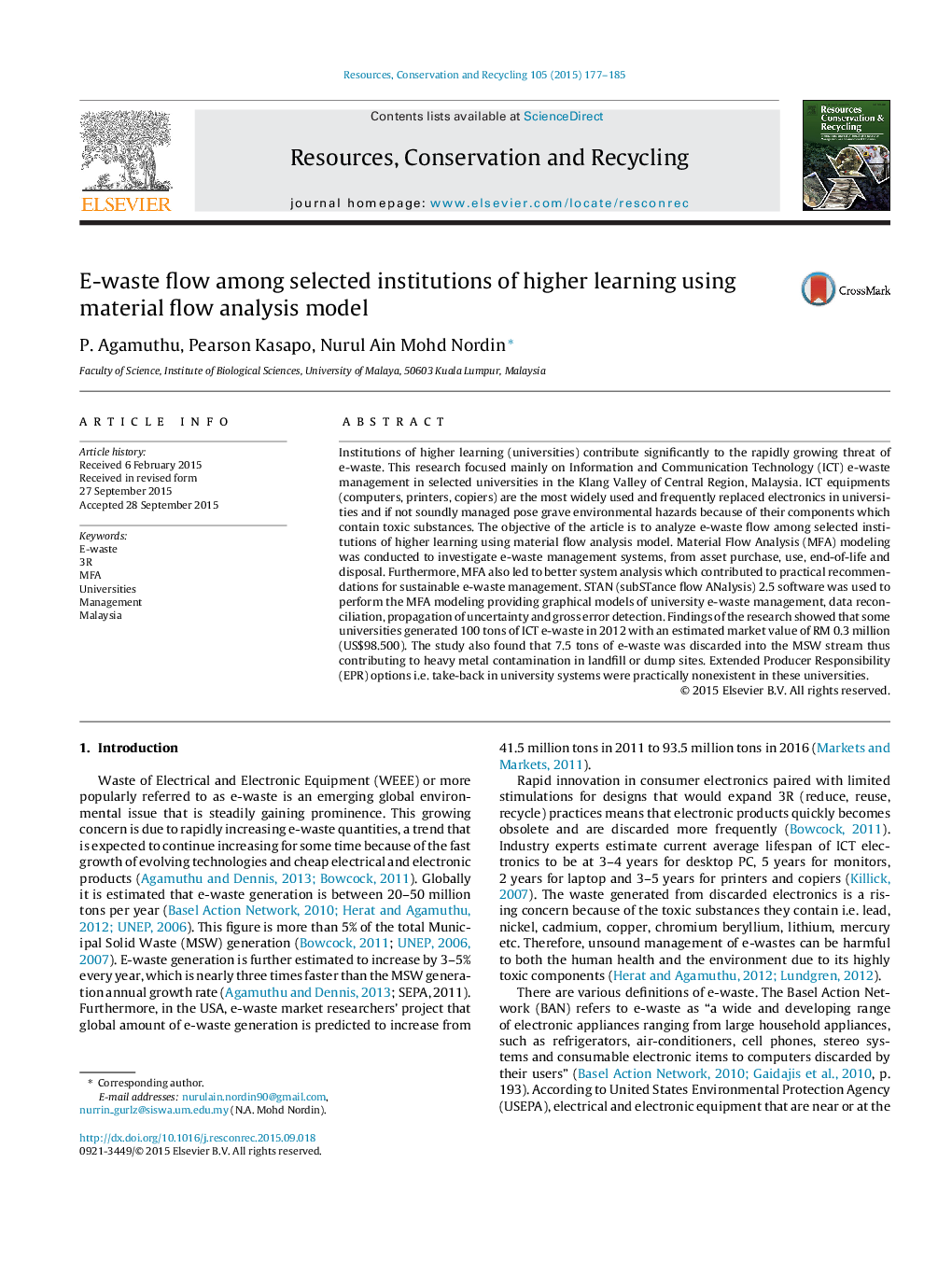| Article ID | Journal | Published Year | Pages | File Type |
|---|---|---|---|---|
| 10508062 | Resources, Conservation and Recycling | 2015 | 9 Pages |
Abstract
Institutions of higher learning (universities) contribute significantly to the rapidly growing threat of e-waste. This research focused mainly on Information and Communication Technology (ICT) e-waste management in selected universities in the Klang Valley of Central Region, Malaysia. ICT equipments (computers, printers, copiers) are the most widely used and frequently replaced electronics in universities and if not soundly managed pose grave environmental hazards because of their components which contain toxic substances. The objective of the article is to analyze e-waste flow among selected institutions of higher learning using material flow analysis model. Material Flow Analysis (MFA) modeling was conducted to investigate e-waste management systems, from asset purchase, use, end-of-life and disposal. Furthermore, MFA also led to better system analysis which contributed to practical recommendations for sustainable e-waste management. STAN (subSTance flow ANalysis) 2.5 software was used to perform the MFA modeling providing graphical models of university e-waste management, data reconciliation, propagation of uncertainty and gross error detection. Findings of the research showed that some universities generated 100 tons of ICT e-waste in 2012 with an estimated market value of RM 0.3 million (US$98.500). The study also found that 7.5 tons of e-waste was discarded into the MSW stream thus contributing to heavy metal contamination in landfill or dump sites. Extended Producer Responsibility (EPR) options i.e. take-back in university systems were practically nonexistent in these universities.
Related Topics
Physical Sciences and Engineering
Energy
Renewable Energy, Sustainability and the Environment
Authors
P. Agamuthu, Pearson Kasapo, Nurul Ain Mohd Nordin,
